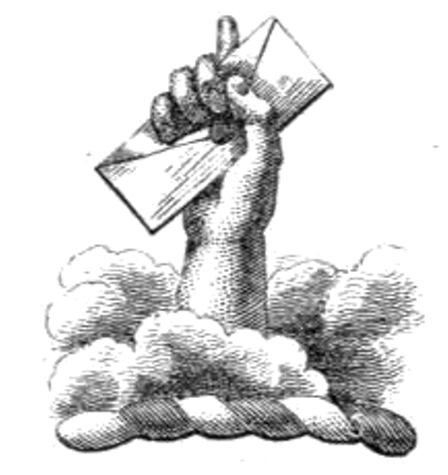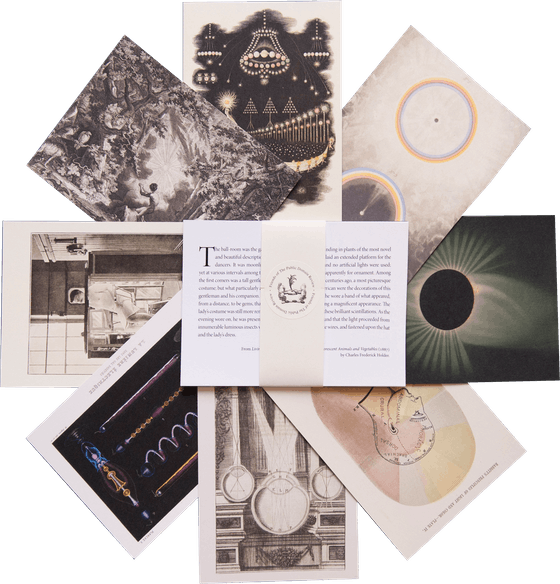
Off with Their Heads: Illustrations of Blemmyes (ca. 1175–1724)
Before we “lost our cool”, we “lost our heads”. The latter idiom dates back to the eighteenth century, but the literal phrase from which it stems (read: decapitation) was in use since at least the time of Chaucer. Long before English existed as a language, however, a headless tribe was thought to roam the distant reaches of the world. They were known variously as Blemmyes or Akephaloi, and later discovered again in the New World as Ewaipanoma. It wasn’t that this species lacked a face. The eyes, nose, and mouth were all present on their chest. Where the brain supposedly resided. . . well that’s lost to history.
The earliest known reference to headless men comes from the Greek historian Herodotus, during a discussion of the eastern region of Libya in the fourth century BCE. “In that country are the huge snakes, and the elephants and bears and asps, the horned asses, the dog-headed men and the headless that have their eyes in their breasts, as the Libyans say”. Pliny the Elder offered a parallel account in his Natural History, describing a people who “have no heads, their mouths and eyes being seated in their breasts”.
No matter that a headless tribe of people never existed, their inclusion in ancient histories made them popular fodder for later bestiary and travelogue traditions. Beginning with their appearance in the late-tenth century Marvels of the East, the Blemmyes often look just as confused as we are — staring out at the viewer, as if trying to understand where, exactly, their neck went wrong. In these illustrations, Blemmyes frequently keep equally strange bedfellows. The thirteenth-century Rutland Psalter illustrates a headless archer aiming an arrow at some kind of merman who plays the trumpet with his butt; a circa 1475 manuscript of the Miroir Historial has a Blemmye cavorting with a dog-faced friend and a man with a tongue like an elephant’s trunk; an illustration from Giovanni Battista de’ Cavalieri’s 1585 monster book shows a Blemmye in the midst of regretting what he wished for: he finally has a head and a neck, but it is grafted from an enraged swan. Sometimes they are terrifying, wielding clubs and crossbows, and other times unexpectedly cute, such as in a sixteenth-century copy of Zakariya al-Qazwini’s The Wonders of Creatures and the Marvels of Creation (1280), where an orange Blemmye looks embarrassed for the bipedal jackals that dance above his missing head.
 Scroll through the whole page to download all images before printing.
Scroll through the whole page to download all images before printing.Illustration from a sixteenth-century copy of Zakariya al-Qazwini’s The Wonders of Creatures and the Marvels of Creation (1280).
 Scroll through the whole page to download all images before printing.
Scroll through the whole page to download all images before printing.Plate from Giovanni Battista de' Cavalieri, Opera nel a quale vie molti Mostri de tute le parti del mondo antichi et moderni (Monsters from all parts of the ancient and modern world, 1585).
 Scroll through the whole page to download all images before printing.
Scroll through the whole page to download all images before printing.Miniature from Thomas Cantipratensis, De natura rerum (On the nature of things), MS. 320 (Valenciennes, Bibliothèque municipale), ca. 1290, f. 46.
 Scroll through the whole page to download all images before printing.
Scroll through the whole page to download all images before printing.Illustration from Weltchronik, Cgm 426 (BSB), ca. 1450–1475.
The inclusion of Blemmyes in the Alexander Romance spawned a subtradition all its own. In a fifth-century Armenian variation of the tale, translated by Albert M. Wolohojian, they are remembered as a rather gregarious, seafood-loving people.
Moving on, we came to a place where there were headless men. They had no heads at all, but had their eyes and their mouths on their chests, and they talked with their tongues like men. They were hairy and dressed in skins, a fish-eating sea people. And they gathered there, on land and from the sea, hydna, which we have at home. They got twenty-five liters worth and gave them to us. And we saw many huge sea lions slithering on the ground. And we saw, too, lobsters as big as ships.
In the mid-fourteenth century Travels of Sir John Mandeville, the Blemmyes seem to have migrated, from Africa to the Andaman Islands. The narrator describes seeing “ugly folk without heads, who have eyes in each shoulder; their mouths are round, like a horseshoe, in the middle of their chest” as well as “headless men whose eyes are mouths are on their backs”.
The Blemmyes were resurrected yet again during the Age of Exploration. In the Discovery of Guiana (1596), Sir Walter Raleigh reports rumors about the existence of men called Ewaipanoma: “folk of foul stature and of cursed kind that have no heads. And their eyen be in their shoulders”. Illustrations accompanying this travelogue and other contemporary voyage narratives depict the headless men as smiling slyly, luscious hair sprouting directly out of their upper trapezius. Even Shakespeare could not resist the image. Othello speaks of men whose “heads do grow beneath their shoulders”; in The Tempest, Gonzalo recounts stories of “such men whose heads stood in their breasts”.
 Scroll through the whole page to download all images before printing.
Scroll through the whole page to download all images before printing.Miniature from La manière et les faitures des monstres des homes qui sont en Orient et le plus en Inde (The appearance and characteristics of the monstrous men found in the East, especially in India, ca. 1300–1400).
 Scroll through the whole page to download all images before printing.
Scroll through the whole page to download all images before printing.Illustration from Guillaume Le Testu, Cosmographie universelle (1555).
 Scroll through the whole page to download all images before printing.
Scroll through the whole page to download all images before printing.Illustration from Konrad von Megenberg, Cod. Pal. germ. 300 (Heidelberg Universitätbibliothek), ca. 1442–1448, f. 357v.
 Scroll through the whole page to download all images before printing.
Scroll through the whole page to download all images before printing.Miniature from Cotton MS Tiberius B V/1 (BL), ca. 1250, f. 82r.
Calling these mythical humanoids “Blemmyes” is slightly confusing, as there was a real Eastern Desert people — ancestors of today’s Beja — once known by this name. How this name also became associated with headlessness is unclear. Some speculate that ancient travelers were actually witnessing warriors carrying shields adorned with painted faces, held over the head and breast, or may have been describing another species of primate entirely, one more capable of lowering their eyes beneath the shoulder line. Or, more likely, this was all one long game of historical telephone, the marvelous details merely noise in the chain of transmission, or even, perhaps, an intentional act of dehumanization that got consecrated as fact along the way.
Indeed, it’s hard to ignore the logic of exoticization present in these images: as if venturing to the limits of the familiar world — whether by foot, on a ship, or in the historical and visual imagination — warped the ability to accurately perceive the strange, the new. One might say it was these illustrators and adventurers, and not the mythical Blemmyes, who truly lost their heads.
Below you will find a half a millennium of Blemmyes, ordered chronologically.
Enjoyed this piece? We need your help to keep publishing.
The PDR is a non-profit project kept alive by reader donations – no ads, no paywalls, just the generosity of our community. It’s a really exciting model, but we need your help to keep it thriving. Visit our support page to become a Friend and receive our themed postcard packs. Or give a one-off donation. Already a supporter? A huge thank you for making all this possible.
Marvels of the East, Cotton MS Vitellius A XV (BL), ca. 1175–1200, f. 102v. – Source
Cotton MS Tiberius B V/1 (BL), ca. 1250, f. 82r. – Source
Vincent de Beauvais, Speculum historiale, vol. 1, ca. 1250–1260, f. 34r. – Source
Rutland Psalter (BL), ca. 1260, f. 57r. – Source
Rutland Psalter (BL), ca. 1260, f. 87v. – Source
Ms. Ludwig XV 4 (Getty, 83.MR.174), ca. 1277 or after, f. 117v. – Source
Hereford Mappa Mundi (detail), 1280. – Source
Thomas Cantipratensis, De natura rerum (On the nature of things), MS. 320 (Valenciennes, Bibliothèque municipale), ca. 1290, f. 46. – Source
Thomas Cantipratensis, De natura rerum (On the nature of things), MS. 320 (Valenciennes, Bibliothèque municipale), ca. 1290, f. 45. – Source
La manière et les faitures des monstres des homes qui sont en Orient et le plus en Inde (The appearance and characteristics of the monstrous men found in the East, especially in India, ca. 1300–1400). – Source
Jacob van Maerlant, Der naturen bloeme (The flower of nature), KB KA 16 (The Hague), ca. 1340–1350, f. 41v. – Source
Tomás de Cantimprém, Codex Granatensis (ca. 1400). – Source
Brunetto Latini, Thesaurus, Plut.42.19 (Biblioteca Medicea Laurenziana), ca. 1301–1400, f. 26v. – Source
Travels of Sir John Mandeville, Cod. Fab. XVI (Stiftsarchiv), ca. 1400–1499, f. 65v. – Source
Livre de merveilles (Book of wonders), Fr. 2810 Tav. (BnF), ca. 1410–1412, f. 29v. – Source
Konrad von Megenberg, Cod. Pal. germ. 300 (Heidelberg Universitätbibliothek), ca. 1442–1448, f. 357v. – Source
Talbot Shrewsbury Book, Royal MS 15 E vi (BL), ca. 1444, f. 21v. – Source
Weltchronik, Cgm 426 (BSB), ca. 1450–1475. – Source
Livre des merveilles du monde, MS M.461 (Morgan Library), ca. 1460, f. 26v. – Source
Peniarth 481D (National Library of Wales), ca. 1475, f. 84v. – Source
Miroir Historial, Ms. Ludwig XIII 5, v1, 83.MP.148.1 (Getty), ca. 1475, f. 67v. – Source
Konrad von Megenberg, Das Buch der Natur, Incun. 1481 .K6 (LOC), 1481. – Source
Hartmann Schedel, Nuremberg Chronicle (Drew University), 1493. – Source
The Travels of Sir John Mandeville (ca. 1500–1599). – Source
Gothic fresco at Dalbyneder Church, Havndal, Denmark, 1511. – Source
Jean Mandeville, Livre des merveilles du monde (Book of world wonders, 1524). – Source
Zakarīyā’ ibn Muḥammad al-Qazwīnī, Ajā’ib al-makhlūqāt wa-gharā’ib al-mawjūdāt (Marvels of things created and miraculous aspects of things existing), MS P 2 (National Library of Medicine), 1537, f. 59a. – Source
Sebastian Münster, Cosmographiae uniuersalis (1550), book VI. – Source
Zakarīyā ibn Muḥammad Qazwīnī, Kitāb al-ʻajāʾib wa al-gharāʼib (Book of Wonders and Oddities), 2010.M.65 (Getty), 1553. – Source
Guillaume Le Testu, Cosmographie universelle (1555). – Source
Konrad Lykosthenes, Prodigiorum ac ostentorum chronicon, : quae praeter naturae ordinem, motum, et operationem, et in superioribus & his inferioribus mundi regionibus (Chronicle of prodigies and portents, which are beyond the order, movement, and operation of nature, both in the higher and these lower regions of the world, 1557). – Source
Konrad Lykosthenes, Prodigiorum ac ostentorum chronicon, : quae praeter naturae ordinem, motum, et operationem, et in superioribus & his inferioribus mundi regionibus (Chronicle of prodigies and portents, which are beyond the order, movement, and operation of nature, both in the higher and these lower regions of the world, 1557). – Source
Adriaen Coenen, Visboeck (1577). – Source
Giovanni Battista de' Cavalieri, Opera nel a quale vie molti Mostri de tute le parti del mondo antichi et moderni (Monsters from all parts of the ancient and modern world, 1585). – Source
Sir Walter Raleigh, Brevis & admiranda descriptio regni Guianae, avri abundantissimi, in America (A brief and admirable description of the kingdom of Guiana, most abundant in gold, in America, 1599). – Source
Sir Walter Raleigh, Brevis & admiranda descriptio regni Guianae, avri abundantissimi, in America (A brief and remarkable description of the Kingdom of Guiana, the most abundant in gold, in America, 1599). – Source
Giovanni Botero, Le relationi universali di Giovanni Botero Benese (1618). – Source
Harley 3954 (BL), ca. 1625–1650, f. 42. – Source
Ulisse Aldrovandi, Monstrorum historia (1642). – Source
A Declaration of a Strange and Wonderull Monster (1646). – Source
John Buwler, Anthropometamorphosis (1653). – Source
P. Gasparis Schotti, Physica, curiosa, sive mirabilia naturæ et artis (Curious Physics, or the Wonders of Nature and Art, 1665). – Source
Fortunio Liceti, De monstris (1665). – Source
Johan Zahn, Specula physico-mathematico-historica notabilium ac mirabilium sciendorum (A physico-mathematical-historical mirror of notable and marvelous things worth knowing, 1696) – Source
Joseph-François Lafitau, Mœurs des sauvages ameriquains (Customs of American savages, 1724). – Source
Jun 11, 2025






